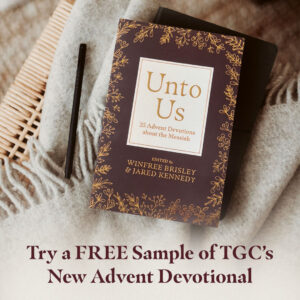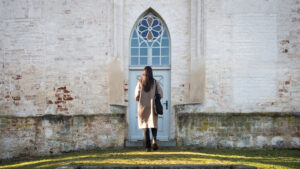Note: FactChecker is a monthly series in which we examine claims, myths, and misunderstandings frequently heard in evangelical circles.
Super Bowl myths.
You’ve heard them all before. You’ve probably even passed them along to friends and family (I know I have).
While Scripture forbids us from spreading a false report. (Exodus 23:1), sometimes, because of lack of information, we unintentionally pass along false reports in the form of myths and urban legends.
Here are four myths about the Super Bowl — two serious and two trivial — that we can all stop repeating:
Myth #1: Sex trafficking increases around the Super Bowl
Update #4: Since numerous commenters have misunderstood the claim “Sex trafficking increases around the Super Bowl” I should explain what it means. Originally, people were claiming that the Super Bowl attracts 10,000+ sex workers to the host city. My claim was based on this number, which is orders of magnitude outside of reality. However, after that number was debunked (see Update #3 below), some people tried to claim that it wasn’t a “myth” if there was any increase in the numbers at all.
I find this a peculiar, if not absurd, standard. Almost all of the news articles have shown that during a Super Bowl, the number of rescued sex workers is less than 20. The assumption some people are making, however, is that the number of sex workers that could be rescued must be zero, so saving any women at all is a substantial increase. For example, in the New York area there are over 19 million people. A six month investigation by 50 local, state, and federal law enforcement agencies rescued 16 underage girls.
What would the same investigation have uncovered if it has not been for the Super Bowl? I suspect the results would have been the same—16 girls. But let’s assume the number was between 0 and 15. If someone wants to dispute my claim about a mythical increase because the number turns out to be 1 and 15, rather than 10,000+, then they are free to do so. I have no illusions that anything I can say will make them see they’ve misunderstood the point of this post. (End of update)
“The Super Bowl is the greatest show on Earth, but it also has an ugly underbelly,” said Texas Attorney General Greg Abbott in 2011. “It’s commonly known as the single largest human trafficking incident in the United States.”
Human trafficking is one of the greatest evils of our age. But contrary to the claim of Abbott — and journalists who repeat the claim every year — there is no evidence that sex trafficking increases during the Super Bowl.
According to the Global Alliance Against Traffic in Women, police departments in cities hosting the Super Bowl deny that sex trafficking increases around the game:
2008: Phoenix police Sergeant Tommy Thompson: “We may have had certain precincts that were going gangbusters looking for prostitutes, but they were picking up your everyday street prostitutes. They didn’t notice any sort of glitch in the number of prostitution arrests leading up to the Super Bowl.”
2009: Tampa police spokeswoman Andrea Davis: “We didn’t see a huge influx in prostitutes coming into Tampa. The arrests were not a lot higher. They were almost the same.”
2010: Miami police said they arrested 14 for prostitution. Those figures are not uncommon for large cities during a seven-day period, experts said.
2011: Public information officer Sherri Jeffrey with the Dallas Police Department: There were “zero arrests for trafficking in the time frame surrounding the Super Bowl.”
Update: The arrest data is not the only proof to dispute the claim. There is an almost complete lack of any evidence for the claim, despite the fact that they are repeated by well-meaning organizations. For example, the National Center for Missing and Exploited Children claimed that 10,000 prostitutes were brought to Miami for the Super Bowl in 2010 and 133 underage arrests were made for prostitution during the 2011 Super Bowl in Dallas. But such claims appear to be untrue. It’s unlikely that 10,000+ exploited woman and children could be offered for sex work to visitors of a city without any evidence of such behavior being noticed by anyone. (see Update 3 below)
Update 2: Since many people have commented on this section, let me add one more update. I have no doubt the problem of sex trafficking is real (I’ve written about that issue before). But when we exaggerate the problem it causes people to trivialize it as concern.
Part of the reason for that is the anchoring effect, a cognitive bias that describes the common human tendency to rely too heavily on the first piece of information offered (the “anchor”) when making decisions. For example, when people hear that 10,000 women and children are being exploited at the Super Bowl, it makes them think the problem is huge. But if they later find out the real number was ‘only’ 500, it seems to be a minor issue since they are comparing it to the 10,000 figure.
That’s why I think exaggeration of the issue leads to trivialization.
Update 3: It turns out that the entire basis of the “10,000 prostitutes” quote was based on a misquote. According to the Christian Science Monitor:
Representative Smith may have inadvertently played into the hands of skeptics who believe the sex trafficking problem is overstated – especially when linked to the Super Bowl. In his statement he said, “The National Center for Missing and Exploited Children reports that more than 10,000 exploited women and girls were trafficked to Miami for the Super Bowl in 2010.” It’s an oft-quoted statistic. But when the Monitor contacted the national center, a media spokesperson said the group had been misquoted. “No one knows with certainty the exact number of children exploited through sex trafficking in the United States or during events like the Super Bowl,” said Staca Shehan, who supervises the center’s Child Sex Trafficking Team, in a follow-up email to the Monitor.
Myth #2. Domestic violence against women increases 40% during the game
Prior to the 1993 Super Bowl a coalition of women’s groups held a press conference in which they claimed that “police reports of beatings and hospital admissions in northern Virginia rose 40 percent after games won by the Redskins during the 1988-89 season.” As Christina Hoff Sommers noted, “at about this time a very large media mailing was sent by Dobisky Associates, warning at-risk women, ‘Don’t remain at home with him during the game.’ The idea that sports fans are prone to attack wives or girlfriends on that climactic day persuaded many men as well: Robert Lipsyte of the New York Times would soon be referring to the ‘Abuse Bowl.’”
During the during the game, the Philadelphia Coalition on Domestic Violence aired a public service announcement addressing the issue of domestic violence. In a subsequent New York Times op-ed (“Violence Translates At Home”), Lipsyte said, “The spot makes no reference to the connection between violence in the living room and violence on the playing field. . . . A big game electrifies the rec room with violent action and sexy advertising, heightening male-female tensions, creating a climate of aggression.”
Many reporters repeated the claims, but Ken Ringle, a reporter for the Washington Post, was one of the few journalists to bother to check the sources behind the stories. What he found was that there was no significant difference between domestic abuse on Super Bowl Sunday than any other day. Some domestic abuse prevention organizations say such myths “foster hysteria and trivialize the problem of domestic violence.”
Myth #3: It’s illegal for your church to host a Super Bowl viewing party
Fortunately, not all myths about the Super Bowl concern such serious issues as violence against women. One of the more benign myths is that it is illegal for churches to host a Super Bowl viewing party.
However, according to the NFL, “A church may hold their ‘viewing party’ in its usual place of worship and must not charge a fee for attending such viewing party. If those requirements are met, the NFL will not object when a church has a party for its congregants to watch the Super Bowl together.” (The one caveat is that the NFL only grants permission for viewing parties on church property and not in rented spaces used for worship services.)
Additionally, if a church is only using NFL marks and no logos to describe the party in materials distributed to its congregants, the NFL will not object. For example, you can refer to the party as the Super Bowl party and you can refer to the two teams participating (i.e., “San Francisco 49ers vs. Baltimore Ravens”), but cannot use the NFL Shield, Super Bowl or Club logos.”
Myth #4: Sewage systems of major cities have broken due to the tremendous number of toilets being flushed simultaneously at halftime.
In the 1984, a Salt Lake City water main burst open right in the middle of a Super Bowl broadcast. Though news stories at the time attributed the mishap to an excess of toilet flushings, no evidence has ever been found to substantiate that, or even the likelihood of such an event. Yet every year Americans repeat the claim that sewage systems of major cities have broken due to the tremendous number of toilets being flushed simultaneously at halftime.
While toilet use during breaks in large-audience programs is certainly much higher than average, it has never lead — as least so far — to serious damage to a large municipal sewage.
Other articles in this series:
Does College Cause Young Adults to Lose Their Faith?
C.S. Lewis and G.K. Chesterton Quotes
Do Faithful Christians Take the Bible Literally?
Is the ‘I Only Need Jesus!’ Declaration Christian?
Who Really Started the Family ‘Culture War’?
Are Your Kids Likely to Lose Their Faith?
Are Millennials More Self-Sacrificing and Community-Minded Than Previous Generations?
Try Before You Buy: FREE Sample of TGC’s New Advent Devotional
 Choosing the right Advent daily devotional can be tough when there are so many options. We want to make it easier for you by giving you a FREE sample of TGC’s brand-new Advent devotional today.
Choosing the right Advent daily devotional can be tough when there are so many options. We want to make it easier for you by giving you a FREE sample of TGC’s brand-new Advent devotional today.
Unto Us is designed to help you ponder the many meanings of this season. Written by TGC staff, it offers daily Scripture readings, reflections, and questions to ponder. We’ll send you a free sample of the first five days so you can try it out before purchasing it for yourself or your church.

































